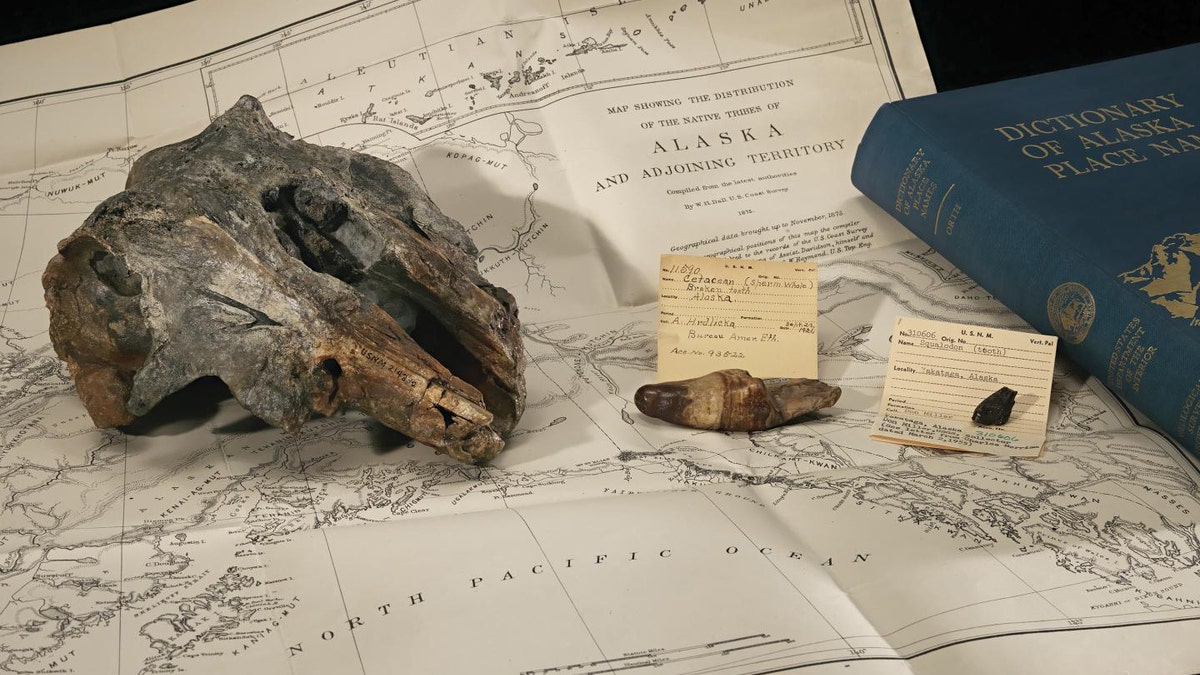
(James Di Loreto, Smithsonian)
Researchers at the Smithsonian have identified a new species of river dolphin thanks to a fossil that has been in the museum's collection for over 60 years.
The fossil specimen was discovered in southeast Alaska in 1951 by geologist Donald J. Miller of the U.S. Geological Society. It is described as a partial skull measuring nine inches long.
Researchers recently studied the skull, which is thought to be one of the oldest ever found from its group, by comparing it with other dolphin skulls, both alive and extinct, and in doing so, discovered its relationship with the South Asian River Dolphin.

(Linocut print art by Alexandra Boersma)
The team further determined that the fossil belonged to a dolphin that lived 25 million years ago. Because it represents a new genus and species, it has been named Arktocara yakataga, which gives a nod to its northern existence.
“Arktocara is derived from the Latin for "the face of the north," while yakataga is the indigenous Tlingit people's name for the region where the fossil was found,” wrote the team.
The present day South Asian River Dolphin is the last surviving species of what once was a large group of dolphins. It is known for swimming on its side, its inability to see and for using echolocation to get around in the waters of Nepal, India, Bangladesh and Pakistan. It is also the only dolphin species found in fresh water.
Alexandra Boersma, a researcher on the team, said that the geographic distance between where the fossil was found and where the species currently lives is noteworthy.
"Considering the only living dolphin in this group is restricted to freshwater systems in Southeast Asia, to find a relative that was all the way up in Alaska 25 million years ago was kind of mind-boggling," Boersma said.
Our Endangered World, a wildlife activism group, most recently estimated there are around 2,000 of these dolphins left in the wild.
The Smithsonian’s findings were published on Tuesday in the journal Peerj alongside an interactive 3D rendering of the fossil.
There are over 40 million specimens in the museum's Department of Paleobiology.
